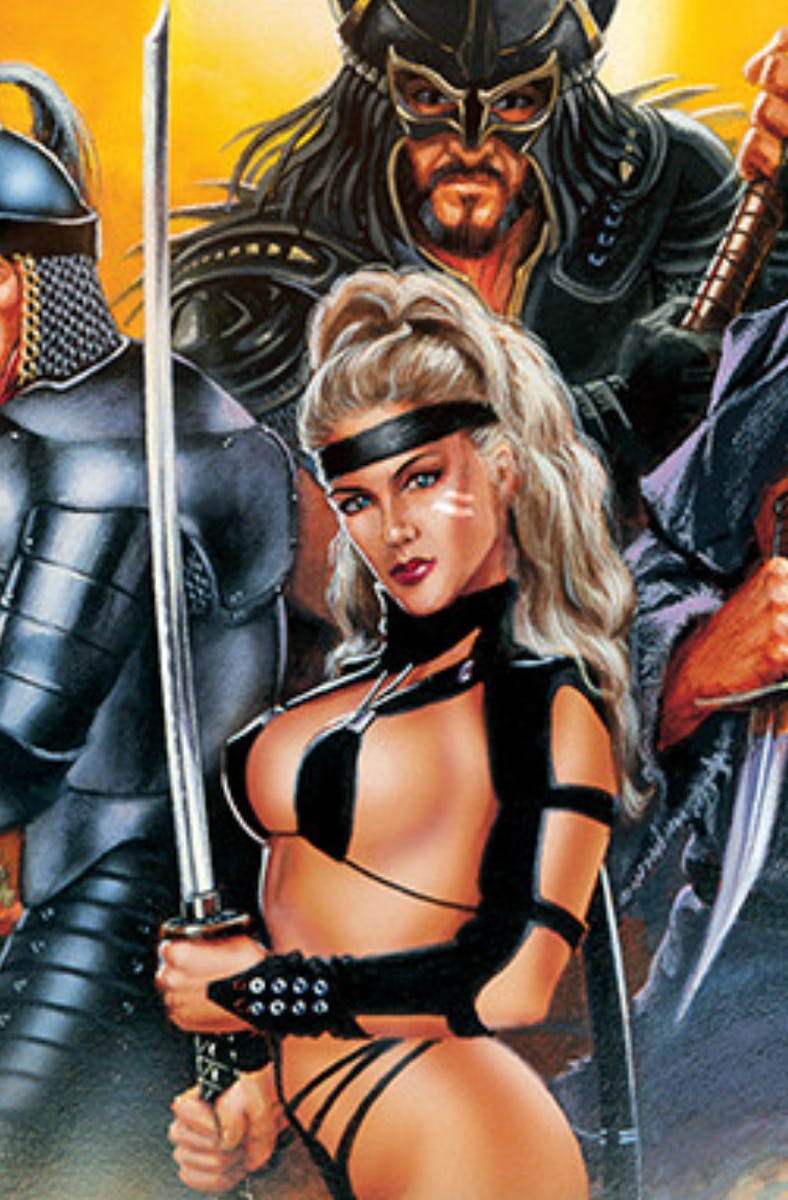Gaming’s Definitive Fantasy RPG Was Almost Something Totally Different
There were role-playing aspects, but they took a backseat to the furious fighting.

To some, The Elder Scrolls series defines the action role playing game genre. Though the last installment in the main series, Skyrim, came out all the way back in 2011, and the next one, VI, has no set release date, Elder Scrolls looms over the industry. Every entry is treated as a bonafide event and Skyrim’s continuous success allowed it to be ported over a dozen times since its original release. Which is a little funny, considering that when Elder Scrolls was born, it was nothing like the RPG standard bearer that we’ve come to recognize.
To go back to the first Elder Scrolls game, Arena, one must travel 30 years into the past, before the birth of Bethesda Game Studios and the massive popularity it would acquire. Back in the late ‘80s and early ‘90s, Bethesda Softworks was a tiny video game publisher behind fairly forgettable titles like Wayne Gretzky Hockey and video game tie-ins to The Terminator. As such, The Elder Scrolls: Arena was one of their first games to have a distinct personality — it just wasn’t the personality that it would eventually develop.
The Elder Scrolls: Arena was originally focused on gladiatorial battles.
When director Vijay Lakshman and his team of artists, designers, and programmers set out to make Arena, they didn’t envision the epic open world odysseys that would turn titles like Oblivion and Skyrim into modern classics. Rather, they sought to, as the “Arena” title suggests, concoct something more focused on combat. You’d form a team of gladiator-esque warriors and travel around with them to battle in different cities in the land of Tamriel, a massive continent that has essentially become the Elder Scrolls version of Middle Earth. There were role-playing aspects, but they took a backseat to the furious fighting.
With a small team that had to divide its attention among multiple projects, Bethesda would have to rise above expectations, many of which were based around the idea that a small company would never be able to pull off an action RPG of any size. In an interview with Planet Elder Scrolls, designer Ted Peterson recalled another studio mocking Bethesda’s aspirations and at some points even believed that a game like Arena would be more ruinous than beneficial.
“I remember talking to the guys at SirTech who were doing Wizardry: Crusaders of the Dark Savant at the time, and them literally laughing at us for thinking we could do it,” Peterson said.
The Elder Scrolls: Arena began as an attempt to turn D&D into a video game.
It didn’t help that Arena changed entirely during the course of its creation. The game’s minimal role-playing side quests grew more and more prominent, while the main mission of winning tournaments with your combat crew evaporated. Testing proved that no one really cared about Arena’s gladiator battles, but the other stuff? Now that was fun. By the time The Elder Scrolls: Arena was released on March 25, 1994, all that remained of its former identity was the title. And the “Elder Scrolls” part? It was allegedly added on by Lakshman, but according to Peterson: “I don’t think he knew what the hell it meant any more than we did…”
Though its box art has certainly aged poorly, with a very scantily clad swordswoman in front of what look like generic RPG party members, Arena garnered a number of positive reviews at the time. PC Gamer called it “entrancing,” while Computer Gaming World predicted that fans would “find the storyline and game world rich and compelling.” That said, Elder Scrolls: Arena bore all of the growing pains that one typically finds in a first installment made by developers still getting their feet wet in the genre. Much of the game’s lore feels a little empty, and the story can seem bare, especially in comparison to what would come with the next entries, Daggerfall and Morrowind.
If you play any game from 30 years ago, you’re bound to encounter a few flaws when compared to its modern day successors.
But according to Peterson, word of mouth was strong and a “cult” following developed. It garnered enough success that The Elder Scrolls II: Daggerfall went into development immediately after Arena was released. It was now clear where the team wanted to go from the beginning. Rather than focus on the entire realm of Tamriel, they’d instead load copious details and locations into the fictional continent’s northwest region and the provinces of High Rock and Hammerfell. Customization and a more fluid role-playing process would take center stage, and Daggefall increasingly moved the series toward the experience that players know today.
If you play any game from 30 years ago, you’re bound to encounter a few flaws when compared to its modern day successors. This is especially true when it comes to the RPG, a genre marked by a more-more-more approach. Newer Elder Scrolls entries have more places to go, more ways to personalize, more methods for fighting, and more bits of information to take in.
But still, The Elder Scrolls: Arena is marked by the lust for adventure and discovery that has driven the series’ most renowned installments. Just as the creative team of the game itself had to explore their options before settling on the proper route, Arena’s journey takes you down multiple paths aside from the main one. You investigate and check every nook and cranny, speak to every character, and take on every monster, and in the grand scheme of things, it’s never a waste of time. Because one day, you will return to find your way.